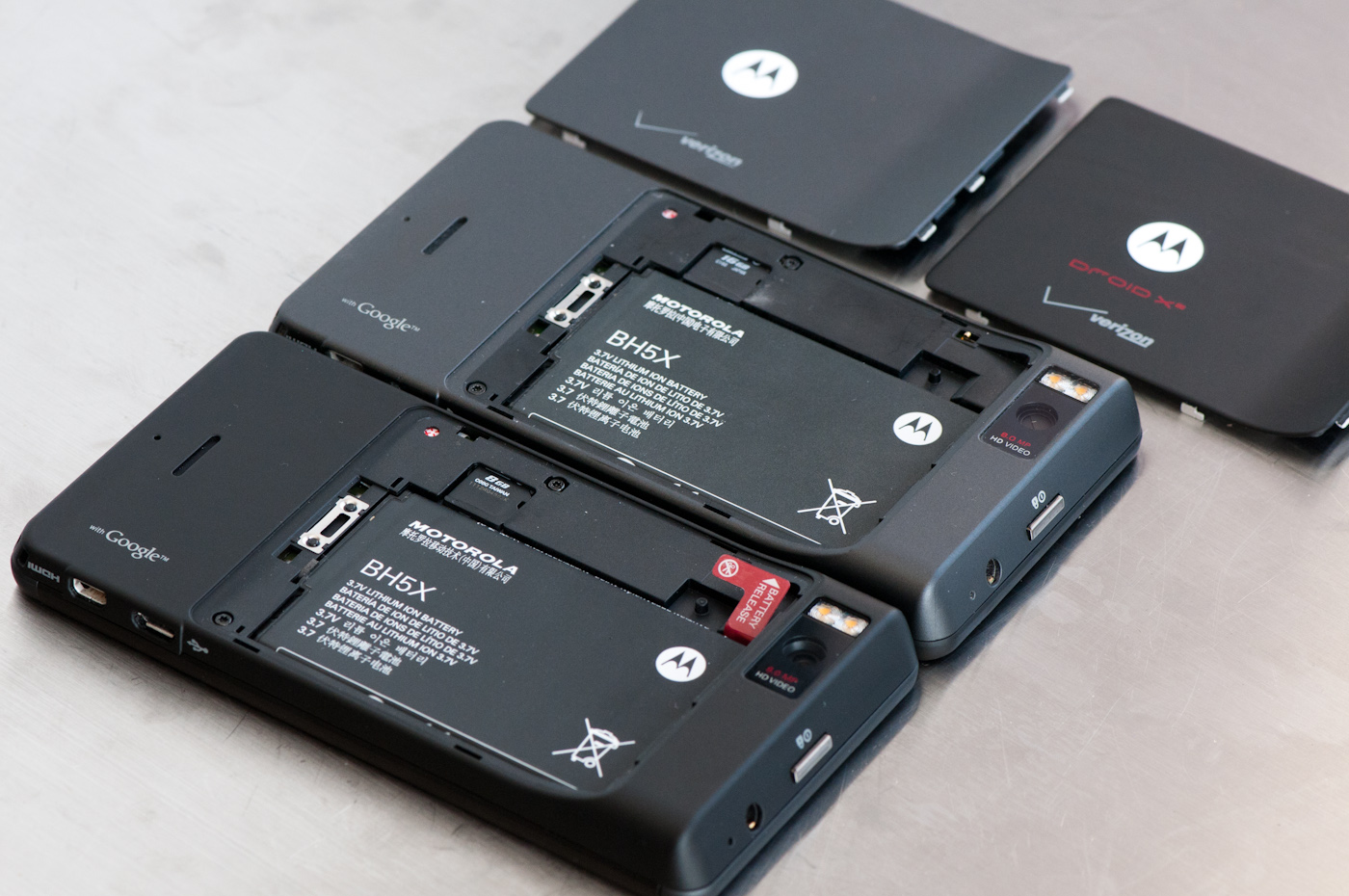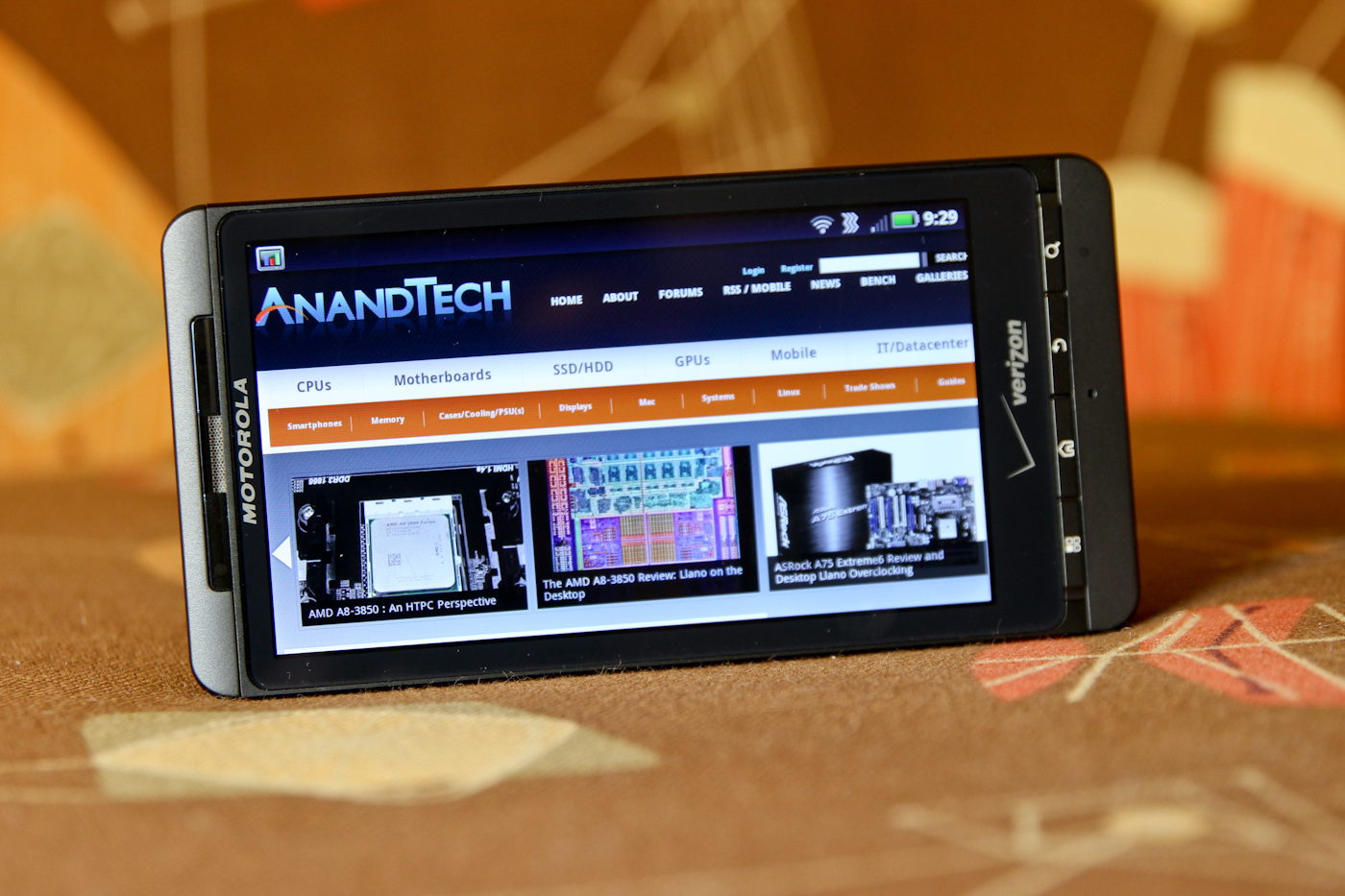A lot of things have changed since last year(Motorola Droid X came up), and it’s time for the original Droid X to finally get replaced with something even more powerful, the Tegra 2-packing Motorola Droid X2.

Motorola seems to have taken an ‘if it isn’t broken, don’t fix it’ approach with the X2, as the new handset is superficially identical to its predecessor. In fact, it’s literally the exact same size, shape, and weight. I borrowed a friend’s Droid X and stuck the X2 alongside it for comparison. With both turned off, I doubt most people could tell the two apart.

The X2 even fits inside the original X case and uses the same battery. The only physical difference between the X and X2 is that the dedicated two-step camera button is now gone. It’s a bit odd considering how much of a fuss Motorola originally made about being one of very few Android handsets that actually offer a camera capture button, allowing you to quickly get into the application by holding the button, and make captures without tapping the screen and potentially losing the shot.
The nice thing about the two phones’ superficial similarity is that cases are backwards compatible, though you’ll get some useless bulge for the absent camera button. I stuck the X2 in my friend’s X case, and it fit perfectly inside. Likewise, the X2 uses the same exact BH5X 5.6 Whr battery that the original X used, so if you’ve got extra batteries laying around or are replacing an X, you can continue using them.

| Physical Comparison | ||||||
| Apple iPhone 4 | HTC Thunderbolt | Motorola Droid X | Motorola Droid X2 | |||
| Height | 115.2 mm (4.5") | 122 mm (4.8") | 126.5 mm (4.98") | 126.5 mm (4.98") | ||
| Width | 58.6 mm (2.31") | 67 mm (2.63") | 65.5 mm (2.58") | 65.5 mm (2.58") | ||
| Depth | 9.3 mm ( 0.37") | 13.2 mm (0.52") | 9.9 - 14.4 mm (0.39"-0.57") | 9.9 - 14.4 mm (0.39"-0.57") | ||
| Weight | 137 g (4.8 oz) | 183.3 g (6.46 oz) | 149.2 g (5.26 oz) | 148.8 g (5.25 oz) | ||
| CPU | Apple A4 @ ~800MHz | 1 GHz MSM8655 45nm Snapdragon | 1 GHz OMAP3630 | 1 GHz Dual Core Cortex-A9 Tegra 2 AP20H | ||
| GPU | PowerVR SGX 535 | Adreno 205 | PowerVR SGX530 | ULP GeForce | ||
| RAM | 512MB LPDDR | 768 MB LPDDR2 | 512 MB LPDDR2 | 512 MB LPDDR2 | ||
| NAND | 16GB or 32GB integrated | 4 GB NAND, 32 GB microSD class 4 preinstalled | 8 GB NAND, 16 GB microSD class 4 preinstalled | 8 GB NAND, 8 GB microSD class 4 preinstalled | ||
| Camera | 5MP with LED Flash + Front Facing Camera | 8 MP with AF/Dual LED flash, 720p30 video recording, 1.3 MP front facing | 8 MP with AF/LED Flash, 720p24 video recording | 8 MP with AF/LED Flash, 720p30 video recording | ||
| Screen | 3.5" 640 x 960 LED backlit LCD | 4.3” 800 x 480 LCD-TFT | 4.3" 854 x 480 LCD-TFT | 4.3" 960 x 540 RGBW LCD | ||
| Battery | Integrated 5.254 Whr | Removable 5.18 Whr | Removable 5.65 Whr | Removable 5.65 Whr | ||
The product launched online with minimal fanfare, and then quietly showed up in stores later - it just didn’t excite the Verizon Android fanbase as much as the original X launch did. Moreover, I find the X2 refresh a bit too safe, with no major outward physical differences to distinguish the X2 from its predecessor other than a subtle color change and a line of red text. No, that excitement seems to be building up to a fever pitch for the Bionic.

Source : http://www.anandtech.com/show/4483/motorola-droid-x2-review-a-droid-x-with-tegra-2/


